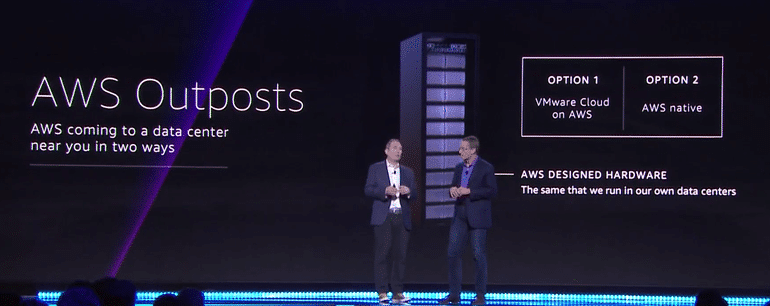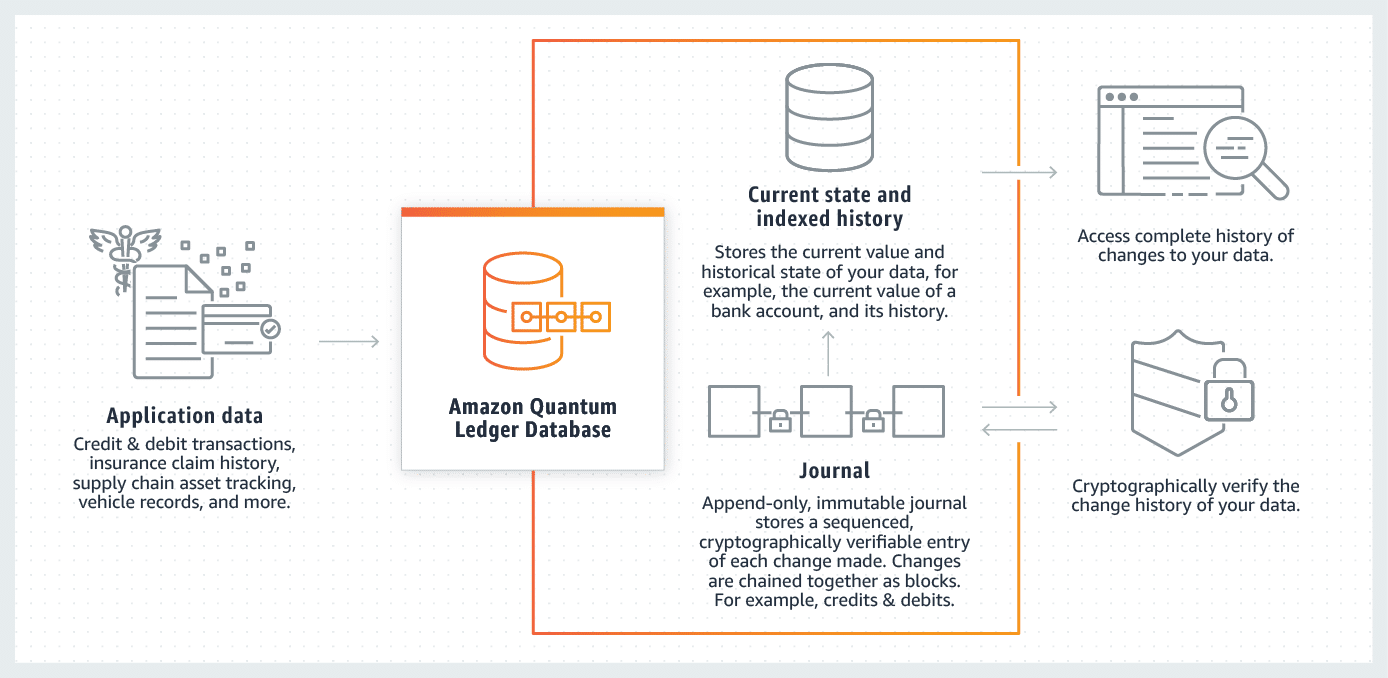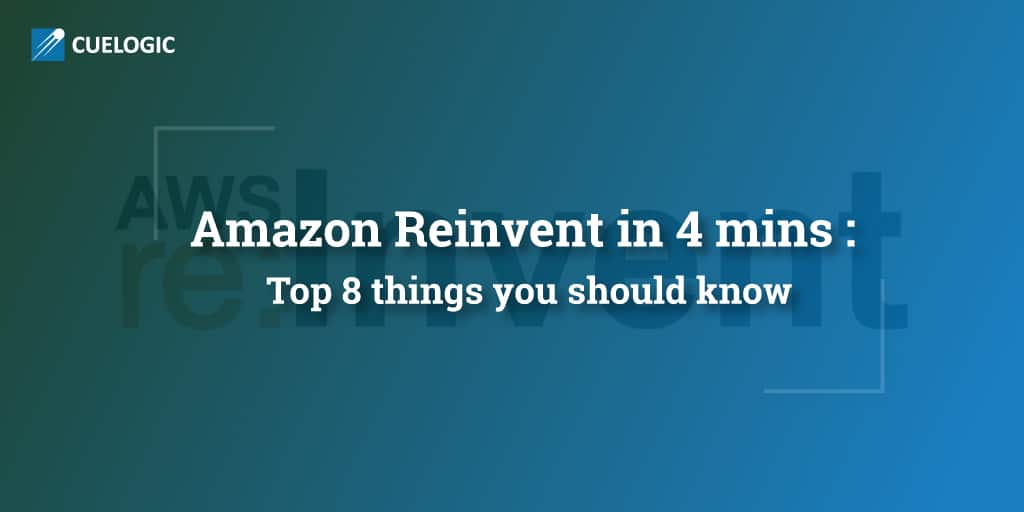The highlight of tech events this year was certainly AWS re:Invent.
The conference was buzzing and so is the aftermath of it.
There were strong reactions in the community about AWS strategy of commercializing over opensource software.
In this piece, I will break down all the things you need to know about events that took place, services/products that were launched and how they will impact your business.
AWS 2.0 – Partnerships and Channel Extension
Keynotes by Andy Jassy and Werner Vogels is a clear evidence that AWS is going after enterprises and invested a lot into building enterprise grade hardware and partnerships.
Amazon is getting serious about hybrid cloud. Evidence?
It’s partnership with VMware.
“A way to provide AWS services, like compute, like storage, on-premises but in a way that really seamlessly and constantly interacts with the rest of my applications and services in AWS” – Jassy
A product called AWS Outposts is the result of this partnership. It is a fully managed service to run cloud native application that is available for their data center – on premise or co-location space. It comes with a pre-configure hardware and software.

In my opinion it was one of the key highlights of the event and a clear message from amazon that it is serious about providing consistent hybrid cloud services.
Developers vs Businesses – Making a clear distinction
Up until Reinvent Amazon had focused a lot on describing their product capabilities. Amazon would rave about the technical depth of their services and look at it like inventions.
They still do. But the narrative is changing to woo Enterprises.
They are looking at buyers who are business users who want a simple solution.
“Our new set of customers would be less interested in getting into the details of all of the services and stitching them together, they are willing to trade some of that flexibility in exchange for more prescriptive guidance that allows them to get started faster”. – Jassy
To achieve this AWS has introduced Control Tower, Security Hub & Lake Formation.
These are an addition to earlier launched services like Elastic Beanstalk (for web apps) and SageMaker (that simplifies Machine Learning algorithms for design & deployment)
- Control Tower is for setting up & governing multi account environment on AWS.
- Security Hub is a central hub to manage compliances & security for the entire AWS environment.
- Lake Formation as the name suggests is to simplify enterprise data lake aided by other AWS tools.
Artificial Intelligence and Machine Learning
Machine Learning without knowing Machine Learning.
AWS already offers three key AI services around voice and image recognition. AWS Lex and Polly are the technology behind Alexa and AWS Rekognition the technology behind prime photos.
In addition to this AWS announced three more services one for Vision and two others in verticals.
- Amazon Textract – A simple OCR powered by ML. Costs $1.50 per 1000 pages. Fair? Only time will tell.
- Amazon Personalize – As the name suggests, it personalizes recommendations. It is inspired from the same tech that is deployed for Amazon.com. Priced at $0.05/GB of data ingestion.
- Amazon Forecast – A prediction engine that is actually a ML solution combining time series data with additional variables. It is priced at 1000 Forecast, data storage & model training hours. We are directly talking about commercializing Amazon.com’s engineering.
Storage
The Glaciers are melting.
No seriously!
Even if you don’t believe in Global Warming, this is a fact. Atleast from an AWS viewpoint.
More data = More cost. Amazon is trying to disrupt this equation.
Cost is key dimension to define your big data architecture and storage strategy.
AWS has announced significant services around storage that claims to be both performant and cheaper.
The old Glacier storage archive has melted away and a new one called Glacier Deep Archive is announce for 2019. It is priced at $0.00099 per GB/month.
Also, finally AWS has realized that windows is too big to be ignored.
To court its users it has launched Amazon FSx for Windows file server.
“Amazon FSx provides shared file storage with the compatibility and features that your Windows-based applications rely on, including full support for the SMB protocol and Windows NTFS, Active Directory (AD) integration, and Distributed File System (DFS),”
Blockchain
Riding the blockchain wave, AWS has announced its steadfast blockchain services this year as well – Quantum Ledger Database(QLD) & Amazon Managed Database.
The former, QLD, is a fully managed ledger database ideal for business who don’t need decentralized application environment.
All they need is a ledger that is transparent, immutable, cryptographically verifiable to get the job done.

Managed Blockchain on the other hand, just like AWS’s many other services.
it’s a wizard to configure Hyperledger-Fabric network. (for now, very soon Ethereum too).
In short, this service will take most of the hassle out of configuring the node and certificates, inviting members and deploying chain code/smart contracts.
IoT
To be honest, IoT is about data and software. Not exactly about physical things.
Since it is about software and data – Amazon can’t be far behind. (If not leading)
4 major services/products were enhanced this year.
- IoT SiteWise – A managed service for industrial facility device that can collect, structure and even search IoT data.
- IoT Events – Simplified detection of changes indicated by sensors such as malfunctions, hostile actions or trigger alerts.
- IoT Greengrass – The service which has the ability to connect to third party platforms and tools like Spunk or Service now logs via APIs.
- Things Graph – A development ecosystem which is drag and drop and provides the ability to build low code IoT applications.
Serverless
Serverless is taking over the container space. We are going to Serverless from less servers.
Using Lambda functions, serverless is doing away with the problems of managing and provisioning server infrastructure.
They have strengthened the Lambda function by offering various additional functionalities.
- AWS Firecracker – MicroVMs for serverless computing. It’s a new virtualization technology.
- Lambda Layers – This will extend the lambda execution environment with any dependencies, binaries or runtimes.
- Nested Applications – To compose application architecture from reusable building blocks. Something I liked to imagine as microservice architected within serverless architecture.
- Websocket support for API Gateway – Build Realtime stateful application with API Gateway and Lambda function.
- ALB Support for Lambda – To point Lambda function to Load Balancers just like your EC2 servers.
- BYOL (Bring your own language) to Lambda – until now only handful of languages were supported to write code over Lambda now you can run any Linux compatible language on lambda, no more language constrains to build your serverless apps.
The big fight! Jassy vs Ellison.
Did you read the news about AWS moving away from Oracle servers? Of-course, you did.
Amazon was highly vocal and public about it.
Jassy didn’t hold back in the conference either.
“The world of old guard commercial-grade databases has been a miserable world for the last couple of decades for enterprises,” he said. “That’s because these old guard databases like Oracle and SQL Server are expensive, they have high lock in, they are proprietary and not customer focused. Forget the fact that they are constantly auditing you and fining you for some license violation, but also they make decisions overnight that are good for them and not for you.”
Ofcourse it is good PR.
But what Amazon is hinting (and probably proving) is that it is highly customer centric.
It is also, perhaps, an exercise in making a strong point about Amazon’s higher technical prowess.
Final Words
Amazon is all in. Its pacey, its innovative, it is responsive (to customers) and it is also aggressive.
Time after time, these re:Invent conferences are a proof of that.
There is no doubt Amazon is a big part of how the future of tech shapes up. It is a serious contender in being a tech platform for digitally enabled companies.
We will be shortly writing about Technology Drivers in 2019, where we will be talking about all of this, and more.
So do ensure that you subscribe to our technology blog.
